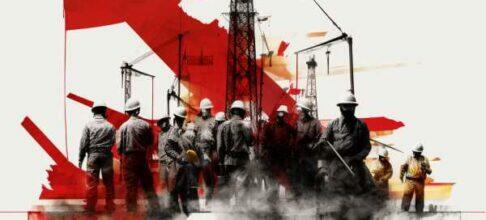Modern technology enables construction companies to complete bigger, better projects at record speeds and with reduced costs. Despite the regular adoption of advanced tech like BIM software and drones, many companies continue to lag behind in terms of their routine HR recordkeeping practices—and it’s costing them countless workforce hours and dollars.
Construction is a paper-heavy industry, with traditional pen and paper methods encompassing a range of tasks, from managing submittals to handling crucial HR documents. Unfortunately, this slows time to productivity, heightens the likelihood of human error and amplifies safety and compliance risks within a strictly regulated industry.
Onboarding
Finding qualified professionals for a new project is half the battle; onboarding them efficiently is the other.
New hires must fill out a variety of onboarding paperwork before stepping foot on a job site, which can prevent contractors from getting workers to building systems quickly. Here are just the basic requirements construction companies must fulfill during the onboarding process:
● Tax-related documents, including a W-4 for employees or W-9 for contractors, I-9 Employee Eligibility Verification form, State Tax Withholding form and Direct Deposit form.
● E-Verify
● Voluntary self-identification form mandated by the Office of Federal Contract Compliance Programs (OFCCP)
● Company-specific HR documents, such as employee agreement forms, policy acknowledgment forms and non-disclosure agreements.
Electronic onboarding systems enable new employees to complete required forms online from home. This way, full crews can hit the ground running on their first day. The digital system can also be set up to verify that every box is filled out correctly before submission, so no information is ever missing. And it can ensure you’re using the most up-to-date forms instead of having to download them for each new hire.
Additionally, new employees are asked to provide sensitive information when they go through the onboarding process. This means that piles of personal data are potentially sitting in an unsecured location until the onsite manager can transport the documents from the job site to the company’s corporate office. Just think about it: would you feel comfortable knowing that your Social Security number is potentially sitting in the open on a truck dashboard until the end of the workday?
These examples immediately impact the professionals on the job site, but the inefficiencies follow companies all the way to their headquarters. Once the files arrive at the main office, businesses will spend additional resources for HR teams to begin the process of properly and securely storing the new information.
When this paper-based process is repeated across multiple jobs, the numbers quickly add up.
Time and Attendance
Paper timesheets offer a familiar method of recording employee work hours but present key drawbacks that businesses should consider—especially when there are plenty of time and attendance software solutions to choose from.
The American Payroll Association estimates that time theft costs businesses up to 7% of their total payroll. Not only do manual time entries make it easy for employees to accidentally or purposefully add extra minutes to their workweek, employees typically fill these out at the end of the week when they’ve likely forgotten their exact hours. This results in under- or overpayment, neither of which is good business practice.
Meanwhile, gathering stacks of paper at the main office and matching each timesheet to the corresponding employee—and don’t forget deciphering illegible handwriting—can extend the payroll process and undermine its accuracy.
Additionally, since time tracking serves as a job costing tool for many companies, inaccuracies can impact project budgets and profitability. As a contractor, you want to know if you’re on budget; and if you’re over budget, you want to know why. Did your team misbid the project? Did some aspects take longer than expected? Did the project go over budget because of a reason that is outside of your control? Time tracking accuracy is a key cost estimating component.
Safety and Compliance
Construction companies must comply with strict government guidelines that regulate safety and workforce management or risk paying huge fines.
So how do you ensure that employees stay current with their government-mandated safety training and certifications? One effective solution is implementing a digital learning management system (LMS) that can efficiently track compliance and even send timely notifications when certifications are nearing expiration. While some construction companies still rely on spreadsheets or paper binders to store this information, it requires manual monitoring and sending updates to employees. However, even with notifications in place, motivating workers to actively participate in updating their credentials can present a challenge.
During audits, companies are asked to provide substantial documentation to prove compliance. Businesses that keep their records in filing cabinets will waste valuable time searching and retrieving the physical copies mandated by auditors. Loss of documents and inaccurate or incomplete files can further complicate these situations.
Final Thoughts
These are just a few examples of the type of paper trails that are important to maintain in the construction industry. But they truly don’t need to be in physical form. Investing in digital and cloud-based solutions can save companies valuable time, money and provide peace of mind on the job site and in the office—both short- and long-term.
Michael Dickran is director of enterprise sales at Arcoro. Reach him at [email protected].





![Greg Joswiak talks Steve Jobs keynotes, ‘Shot on iPhone’ event, and more in new interview [Video]](https://www.tistalents.com/wp-content/uploads/2024/01/385597-greg-joswiak-talks-steve-jobs-keynotes-shot-on-iphone-event-and-more-in-new-interview-video-486x220.jpg)









